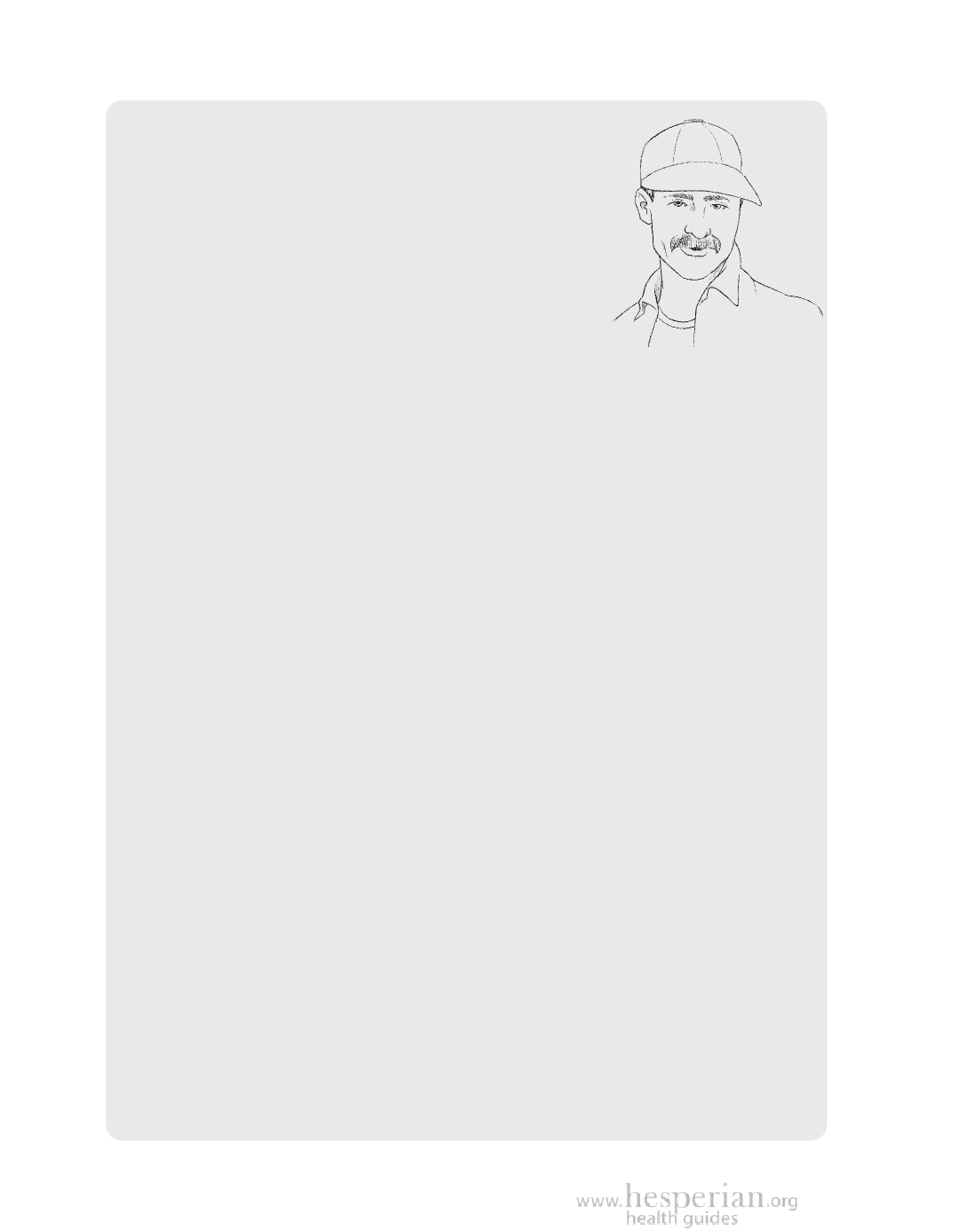
280 Sustainable Farming
Juan, Pedro, and Hurricane Mitch
Juan’s grandfather once grew plenty of food in the
valley where he lived in Honduras, Central America.
But when a fruit company bought his land, he moved
up into the hills. There he taught his son, Juan’s
father Aurelio, how to clear the hillside of trees, and
burn out the stumps. After each harvest, they burned
the cornstalks and bean vines to make more ash to
fertilize the soil.
Aurelio taught Juan to farm in the same way. But by the time Juan was a
young man, the soil was tired and the harvests were poor. Juan could not clear
new land because other farmers, fruit companies, and cattle ranchers owned
all the nearby land.
Juan cut down all the trees on the hillside and planted as much corn, beans,
and vegetables as he could. But the corn gave only one small ear and insects
damaged the beans. Like many of his neighbors, Juan bought chemical fertilizer
to help his crops grow, and sprayed pesticides to kill the insects. Finding the
money for these was hard, especially when the land still produced barely
enough to feed his family.
When a big storm brought 4 days of hard rain and strong winds, hillsides
became rivers of mud and houses fell down all over the countryside. Juan’s
crops were ruined. His soil washed away, leaving behind nothing but rocks. His
farm was destroyed, and he had to start all over.
Juan’s neighbor Pedro survived the storm better. Pedro grows his corn,
beans and vegetables between trees that produce fruit, shade, and fodder
for his animals. Pedro does not burn his cornstalks and bean vines, but
chops them up after the harvest and leaves them on top of the soil. Pedro
also planted live barriers of agave cactus and other plants to keep soil from
washing off his fields. After the storm, tree roots held most of the soil in
place, and the barriers he made collected the rest.
“The different plants help each other and make the soil rich,” Pedro says.
“You would not even know we had a storm here. The water just soaked in
better because my soil is like the soil in the forest.”
With help from Pedro, Juan began to restore his field. He began by planting
a bean crop as a green manure to restore soil fertility. He also planted live
barriers and a variety of trees. Soon, other neighbors began trying these
methods as well. Juan and the other farmers in the area have hope these
sustainable methods of farming will help their families survive future storms.
As he watches his young plants and trees grow, Juan thinks of his children
who will use this small piece of land to support their children for many years
to come.
A Community Guide to Environmental Health 2012